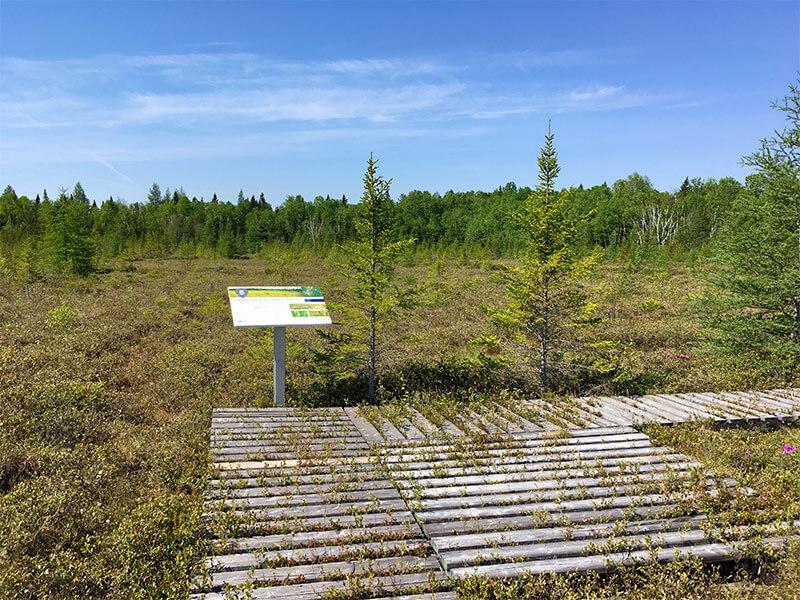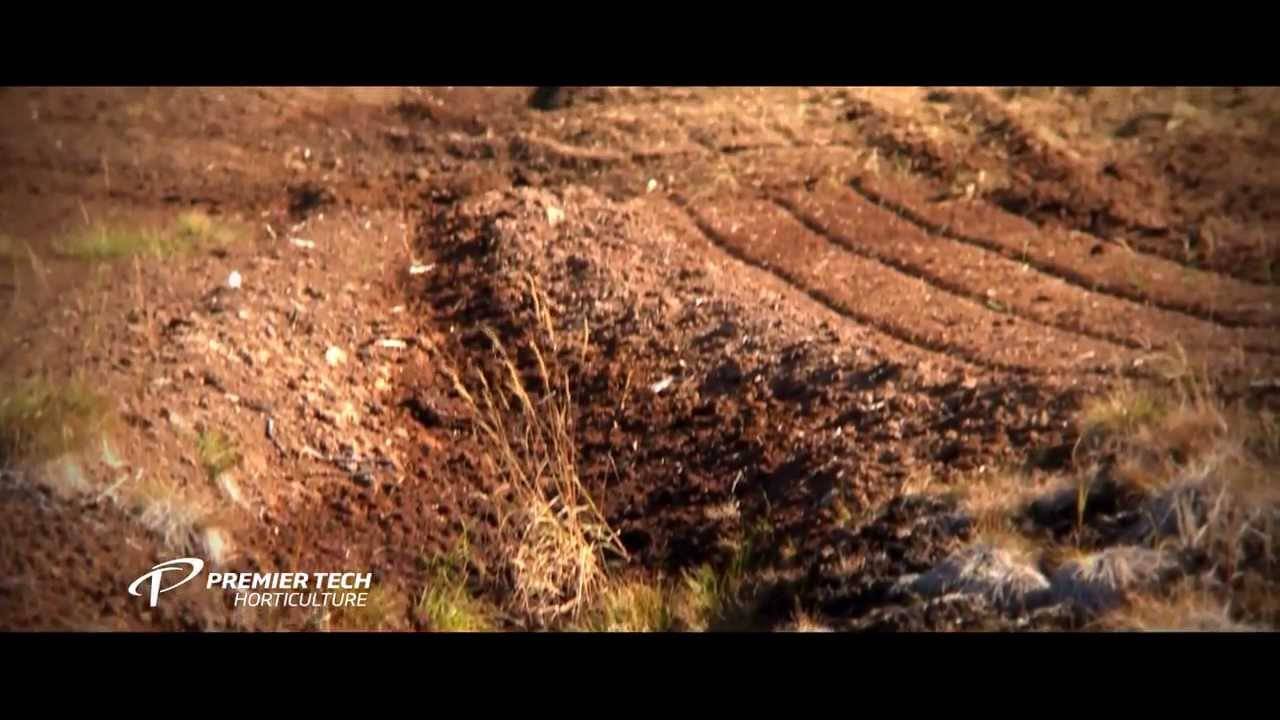Horticultural Sphagnum Peatland Management

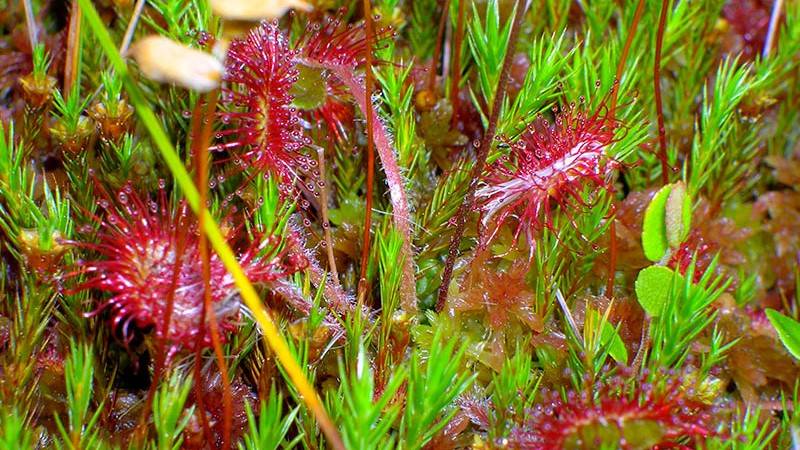
Premier Tech’s Environmental Management Approach
Sphagnum peat moss is the most important ingredient for soilless media, in part because of the exceptional characteristics it brings, making it the ideal base component of all growing media. Sphagnum peat moss is valued by growers and gardeners because it is virtually free of weeds, insects, and diseases. It also has a high-water holding capacity with good air space, has unmatched buffering characteristic, is consistent from year to year, improves the cation exchange capacity and crops thrive in it. However, many questions have been raised about it. Where does it come from? How much is there? How long will this valuable resource last? Etc.
As all producers agree that restoration is essential to maintain this valuable resource for future generations, research is helping the industry to evolve and bring new measures to responsible peatland management. Concepts like “wise use” of peat are coming from science at the national and international level.
Premier Tech has developed a restoration program that includes a policy and procedures for the opening and closing of peat bogs. The program allows standardized management principles that are followed at all bog locations. The goal of this environmental management approach is to secure Sphagnum peat moss for future generations.
Horticultural Sphagnum Peat Formation
To better understand the ‘why and how’ of restoration, first let’s look at the Sphagnum plant. There are more than 335 species of Sphagnum found around the world with about 16 species found in Canada. Approximately 5 species are dominant with most peat bogs across Canada, but generally limited to about three species depending on the peat bog and the region it is located. Sphagnum moss is a non-vascular plant (no roots) that grows in acidic water derived from precipitation.
As the Sphagnum plant grows, it leaves behind dead portions, consisting of the cellulose and hemi-cellulose structure of the moss plant, to accumulate in the water, which we refer to as ‘peat moss’ (Figure 1). The unique structure holds water on the leaves, between leaves and stems and within the cellular structure. Inversely, air is found where water does not occupy.
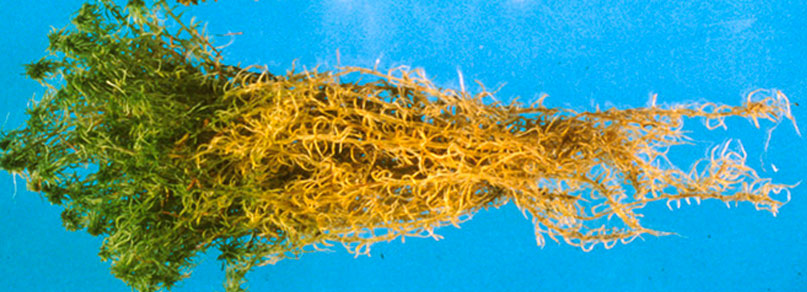
Sphagnum peat bogs are found in boreal regions of the northern and southern hemispheres. The combination of an acidic, low-nutrient watery environment and cool temperatures provide ideal conditions for Sphagnum moss to grow. The cool temperatures and the absence of oxygen preserve the fibrous, organic layers of peat moss. In Canada, peat bogs, as seen in Figure 2, cover approximately 113.6 million hectares (281 million acres) or about 11% of the total land area. For good measure, harvesting currently happens on approximately 12 000 hectares (30 000 acres) or about 0.01% of all Canadian peat bogs.
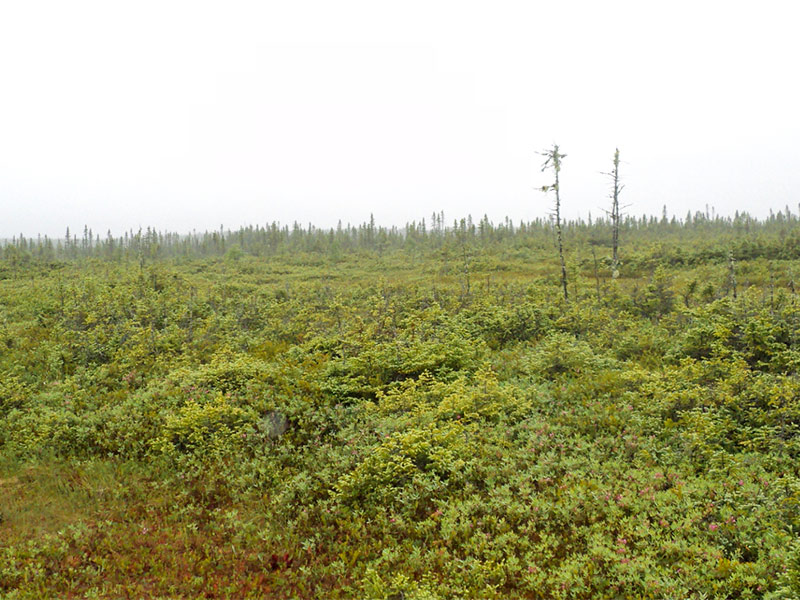
Horticultural Sphagnum Peatland Harvesting
In Canada, peat moss harvesting began in the Bas-St-Laurent region (Quebec) around 1933. For many years, peat moss was harvested in block-cut sections with hand tools. In 1967, harvesting methods at Premier Tech changed to mechanical vacuum-harvesters, which has become the standard in Canada today. This is important to mention since harvest methods have an impact on how peatlands are restored.
Some Sphagnum peat bogs are forested while others are not. Depending upon its geological age, Sphagnum peat bogs may or may not have higher plants growing on their surface. Higher plants include Tamarack, Spruce and plants from the genera Ericacea (blueberry, cranberry, rhododendron, etc.).
In all cases, harvesting horticultural Sphagnum peat moss begins with diverting the water within the peat bog. This is done by digging a series of ditches within a section of the bog to channel the water and lower the water table. Maintaining the proper level of water in the bog is important since introduction of air will accelerate the decomposition of the lower vegetative peat layers of the bog. Careful attention is necessary to maintain an optimum level of water for management of the peat, however enough water must be removed to allow equipment to operate on the bog surface without ‘sinking’.
Water management alone can take up to one year. Once the water table is lowered to a manageable level, equipment can enter the peat bog to prepare its surface. If present, trees are cut, and the logs are used to make roadways within the bog, then large stumps and smaller vegetation are removed.
In years past, the surface containing live Sphagnum moss was rototilled to loosen the surface and scraped off. Today, this layer is carefully removed for use at restoration sites. This live Sphagnum moss is harvested and used as donor plants to propagate Sphagnum moss in peat bogs that are no longer harvested.
Once the surface is rototilled to loosen the compacted layer, tractors pull specialized harrows to comb the surface and ‘roll’ the loosened peat so sun and air can dry the Sphagnum peat moss.
Once dried to the optimal level, the blonde to light brown fibrous Sphagnum peat moss is harvested with large vacuum harvesters. This equipment drives across the bog surface drawing the dried Sphagnum peat moss into a large canister that holds approximately 1,800 ft3. It only takes 15 minutes for a harvester with a 25-foot-wide suction path to fill its canister. After filling, the harvester unloads the Sphagnum peat moss into large piles, which are later transported to the factory for screening, grading, quality monitoring and packaging.
The size and depth of a Sphagnum peat bog determines the number of years peat moss can be harvested. The upper layers of the peat bog possess blonde fibrous peat, which is the youngest peat, geologically speaking. As bog layers are harvested, the degree of decomposition and humification increases, as does the age of the Sphagnum peat moss.
Older peats are darker in color and possess shorter fiber. Shallow bogs are harvested for up to 7-10 years. Some deep bogs may be in production for over 50 years. In most cases, the upper layers of fibrous peat moss are harvested for horticultural purposes leaving behind the short fiber, dark brown layers. These sites are restored to natural Sphagnum peat moss accumulation, indigenous plant material and wildlife.
Horticultural Sphagnum Peatland Restoration
In 1991, the Canadian Sphagnum Peat Moss Association developed a policy for peat bog development and restoration. Since little information was known about peat bog restoration at the time, a three-year research project was granted to Laval University to determine various restoration methods. As an expert wetland manager with research team members, Premier Tech actively participated in this project.
After several years of research and trials, a method and procedure for peat bog ecosystem restoration was developed for the horticultural peat industry. Peat bog restoration begins by obstructing the drainage ditches within the bog. This allows water from precipitation to saturate the peat bog once again. Once the water table has risen just below the bog surface, live Sphagnum plants are taken from adjacent sites that have been newly opened for harvesting or from donor sites that have been identify prior the bog development and are brought to the restoration area.
There, Sphagnum plants are spread with a manure spreader and lightly coated with straw to maintain humidity and prevent them from drying out. The best time of year for Sphagnum plant reintroduction is autumn. After reintroduction, careful attention is given to maintaining water levels within the peat bog to insure growth of the new vegetation.
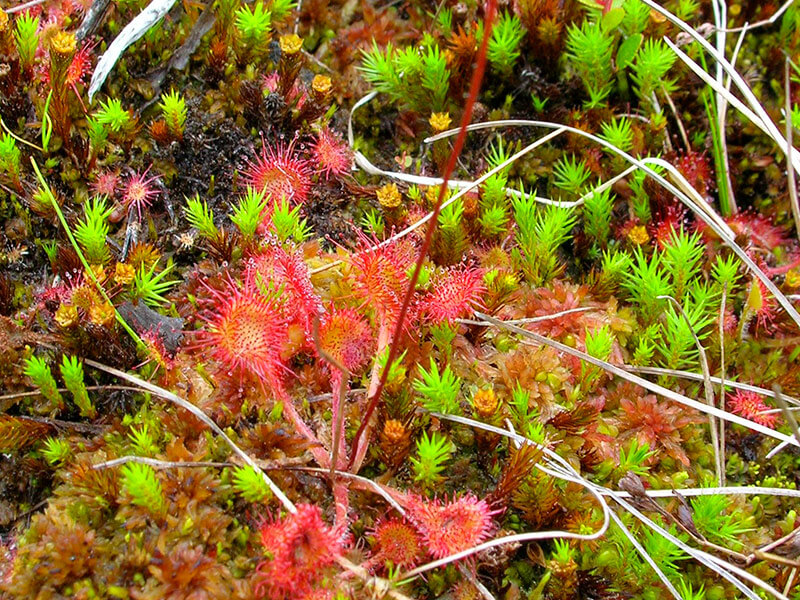
After a few years, different species of Sphagnum can be observed growing in the bog (Figure 3). These include S. fallax, S. cappillifolium, S. russowi S. fuscum, all of which grow according to the amount of water available (some are true aquatics, others terrestrial). As the Sphagnum takes hold (Figure 4), it is often mixed with green moss, carnivorous plants like the Pitcher plant and the Round-leaved sundew, leather leaf, Northern bog laurel, small bog cranberry and black spruce.
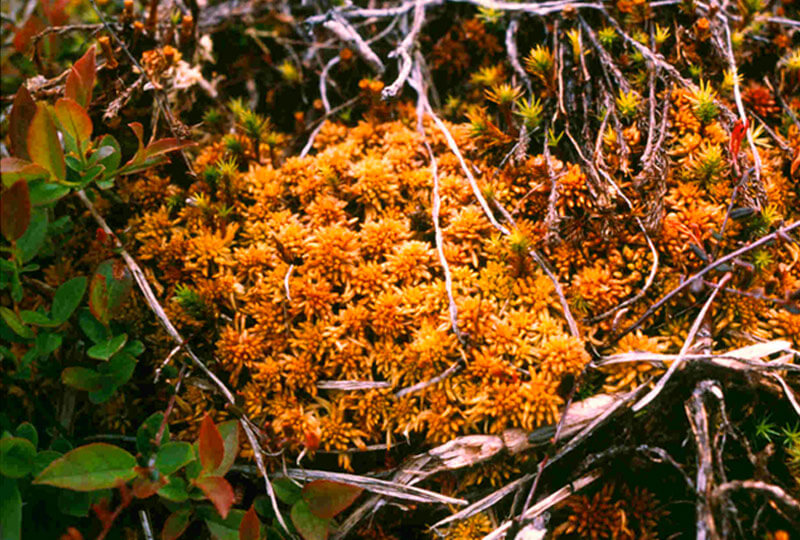
For Premier Tech, the first implementation of large-scale restoration began in 1995. In 1999, Premier Tech’s restoration efforts expanded westward for a peat bog in Saskatchewan. To date, restored peat bogs exist in New-Brunswick, Quebec, Manitoba, Saskatchewan, Alberta and Minnesota.
Restoration is a continuous process on more than 85% of the peatlands on which harvesting occurred since 1933 where harvesting activities were ceased in the surrounding area. Today, more than 70% of these restored areas are growing into natural and resilient ecosystems.
In all, good results are seen for establishment of Sphagnum and other bog plants at these sites. The future looks promising considering the complexity and the amount of time required in returning peatlands to functioning ecosystems (Figure 5).
